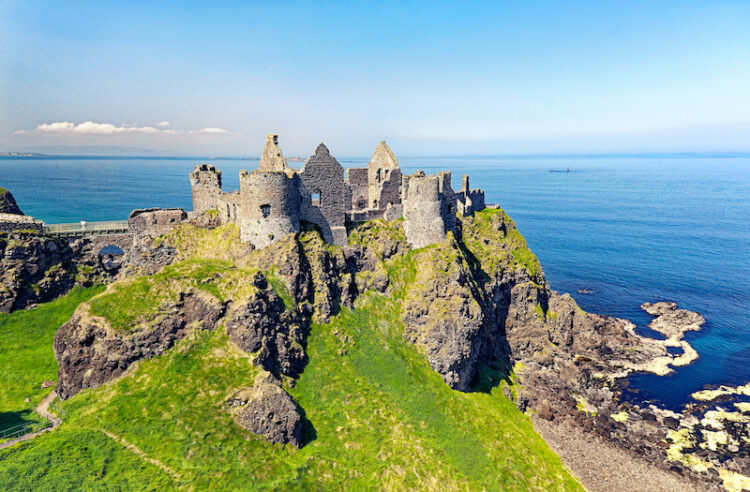Tracing your cultural heritage and family genealogy is a fascinating undertaking. Family origins have an interest that goes beyond mere intellectual curiosity. We feel bound by our connections to the past, by archetypal respect for all that has come before us. The mystery of your family’s origins is waiting to be uncovered, no matter what your race or country of origin. With a bit of planning and skillful research, it is possible to reveal the roots of your family tree and discover the unique ancestry that is yours.
The art and science of genealogy are far too broad and rich a field to receive adequate commentary here. However, if you are looking for a brief introduction to Celtic heritage and the possibilities of researching your Irish genealogy (as an example of general family tree considerations), please… read on. My goal is to provide you with the first few tentative steps toward better understanding Celtic heritage and then to briefly explore the first steps in seeking out your family tree. At some point in your journey, you will want to see firsthand the lands and cultures that gave birth to none other than you.
The Celtic World
What is a Celt? The Celts are one of the ancient races of the world, tracing their origins to before written history, somewhere in Eastern Europe. By 500 BC, the Celtic world stretched from Ireland and Scotland in the West to Russia in the East and down to the Mediterranean. By the fourth century BC, they were reckoned to be one of the four great barbarian races by the Ancient Greeks. The Celts were never really unified as a people, but they shared a common culture. To this day, a Welsh speaker can make themselves understood by a Breton or recognize links to Scots or Irish Gaelic. The inexorable spread of the Roman Empire from the south and the strength of the Germanic tribes to the north forced the Celts westward, to the less hospitable parts of France, Spain, and the British Isles.
Today, the Celtic strongholds are Scotland, Ireland, Wales, the Isle of Man and Cornwall in the British Isles, and Brittany in France, but you can find evidence of the ancient culture across Britain and parts of Western Europe.
Exploring through Travel
A Celtic vacation isn’t like a European vacation or a Caribbean vacation – it is less focused than that. Because the Celts are spread across the world, it’s hard to say “I went to the land of the Celts” – because there are so many. 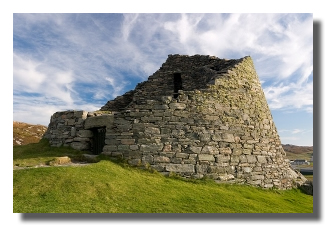 In the end, it comes down to a question of choice. Visiting Scotland, Ireland or Wales gives you a direct connection to Celtic history, people, and culture. But it can be satisfying in a different way to visit the places where the “Celtic-ness” has been absorbed into something else. For instance, in Cornwall or Brittany, the Celtic culture is less obvious – but it is still there, nonetheless. Half the fun is looking for it. You might find an ancient Celtic cross in a remote Breton village. Maybe you’ll hear a fisherman speaking a language too guttural and musical to be French – he’s speaking Breton, which sounds a little like Welsh. It’s not that the Celts have left – they are, most definitely, still here.
In the end, it comes down to a question of choice. Visiting Scotland, Ireland or Wales gives you a direct connection to Celtic history, people, and culture. But it can be satisfying in a different way to visit the places where the “Celtic-ness” has been absorbed into something else. For instance, in Cornwall or Brittany, the Celtic culture is less obvious – but it is still there, nonetheless. Half the fun is looking for it. You might find an ancient Celtic cross in a remote Breton village. Maybe you’ll hear a fisherman speaking a language too guttural and musical to be French – he’s speaking Breton, which sounds a little like Welsh. It’s not that the Celts have left – they are, most definitely, still here.
So make your choice. If you have the time for a voyage of discovery, you could head straight for one of the Celtic heartlands.
Wales
The Welsh language is taught in schools, and street signs are bi-lingual, Welsh, and English. Wales now has its own National Assembly, and while it remains part of the United Kingdom, it has been given a degree of autonomy. Everywhere you look, you see a nation rediscovering its own Celtic heritage. From a big, thriving metropolis like Cardiff to the tiniest mountain village, you’ll see “Welshness” everywhere you look.
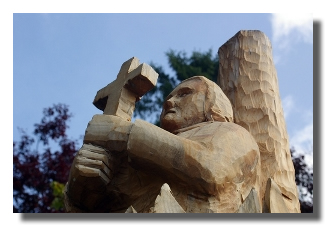
West Wales is generally thought to have the most Celtic areas, and a trip to Pembrokeshire, the “Land’s End” of Wales, is rich with history. St David, the patron saint of Wales – Dewi Sant in Welsh – was a Celtic monk who became Archbishop of Wales during the sixth century AD. He was of royal blood and is said to be descended from King Arthur, the ultimate Celtic icon. He traveled widely through Wales and beyond to the other Celtic strongholds in Cornwall and Brittany. If you hear a Welsh person say “Gwynech y pethau bychain” (do the little things), it’s a well-known saying of St. David and was one of the last things he told his followers to do before his death.
His influence lived on after his death, and the Cathedral of St. David’s, in the city of St David’s, is built on the site of the monastery where he died. St David’s is a great place to base yourself to discover some of Wales’ Celtic heritage. It’s also an exceptionally beautiful part of the world, and the Pembrokeshire Coastal Path is breathtaking.
Scotland
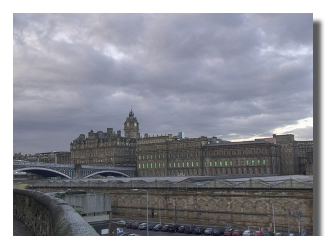
“Do you have the Gaelic?” you might hear one Scot ask another. Their ancient Celtic language has been less successful in being dragged back from the brink of oblivion, but inroads are being made. Centuries of conflict with neighboring England have left a nation fiercely proud of its independence. A visit to a more remote area will give you a heady dose of Celtic culture that you will never forget. A trip to the Scottish isles, such as Mull or Skye, will introduce you to many Scottish traditions, including, of course, whiskey. Try to take part in a traditional “Ceilidh” (pronounced kaye-lee), a kind of social evening, musical event and dance all rolled into one, to experience authentic Celtic entertainment at its best.
A good place to base yourself would be Oban, on the West Coast, known as the gateway to the Isles. From here, you can catch ferries or arrange trips to many of the islands, including Iona. If you’re in search of the Celts, this site has it all. St. Columba founded a monastery here in the sixth century, from which he set about converting Scotland and much of Northern Europe to Christianity. It is thought the Book of Kells, an ornate illuminated manuscript of the four gospels, was produced here. Iona Abbey feels like the ancient Celtic monks have just stepped out for a moment. Today, Iona is the home of a modern Christian community that is a leading force in the Celtic Christianity revival.
Ireland
When it comes to emigrating, the Irish did it in style. It’s reckoned that 80 million people around the world consider themselves to be of Irish descent – that’s 14 times the current population of the Irish Republic. While the Irish government takes no responsibility for these people, it amended its own constitution, the Bunreacht na hÉireann in 1998 to read “the Irish nation cherishes its special affinity with people of Irish ancestry living abroad who share its cultural identity and heritage.” In many ways, Ireland’s tourist industry is built on its Celtic heritage.
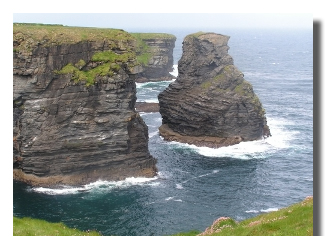
Irish tourism is making the most of international interest in Celtic history and heritage. Dozens of tours promise a taste of the myths and legends, the history, the landscape, and even the cooking of this Celtic nation. Dublin is a big city, full of history – but you’ll get more of a feel for the Celtic heritage if you head for less cosmopolitan places. Visit a destination like Kells – this is where the Book of Kells mentioned earlier was kept for generations – and you’ll be plugged straight into the mainstream of Celtic history. Take a tour and visit the beautiful Lough Derravaragh in County Westmeath, which plays a central part in the Celtic legend of the Children of Lir. Climb to the Lia Fail standing stone on the Hill of Tara in County Meath, and touch it. If the stone cries out, then legend says you are the true High King of Ireland. (Since this hasn’t happened recently, there appears to be no mechanism in place for you to claim your throne!). Wherever you end up in Ireland, you will not have to go far to find a piece of Celtic life.
In search of King Arthur
Perhaps the most common Celtic legend is that of King Arthur. His first recorded appearance is in Welsh literature, and although the common picture of him is a medieval knight in shining armor, he was more likely to have been a warrior from 5th century Britain, from the chaotic times after the withdrawal of the Romans.
Legend says Arthur was born at Tintagel in Cornwall. The dramatic setting of Tintagel castle is steeped in history, but to be able to fully explore the site, you do need to be reasonably fit. There is a walk along a coastal path from St Materiana’s Church in the village which will take you to the inner walls of the Castle itself. The path is suitable for wheelchairs and walkers, but there are some steep steps if you want to go on to the Castle gateway. At the time of Arthur, the castle would have been connected to the mainland, but by the 12th century, the sea had washed the causeway away. The ruins that you can see today date from the mid-12th century, but it’s believed those were built on ruins dating from a much earlier time.
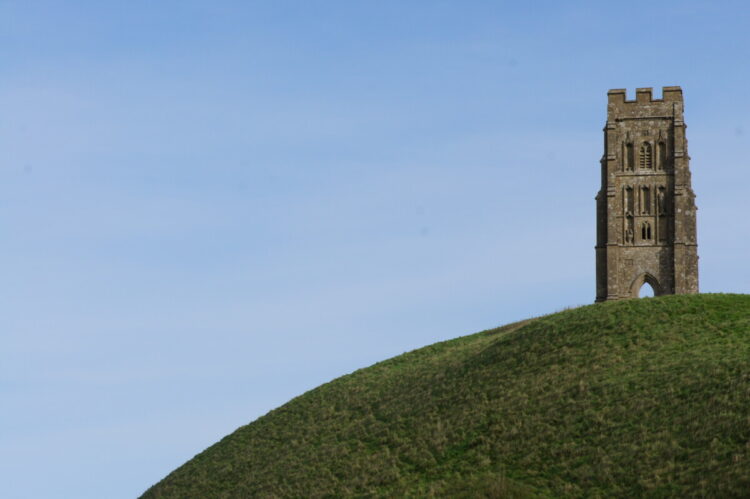
There are plenty of things to see in the area around Tintagel that, if not direct evidence of King Arthur himself, are at least strong pointers to the rich Celtic culture that existed in the region. Head out of Tintagel on the Boscastle road, and at Trevethy, join the public footpath behind the Rocky Valley Centre. Follow the path to St Nectan’s Glen, which is promoted as one of the ten most important spiritual sites in Britain. A spectacularly beautiful 10m-high waterfall plunges into a natural basin and then into a shallow pool at the head of the glen.
According to legend, this is where the Knights of the Round Table swore to find the Holy Grail. Whether it is or not, it is a fact that St. Nectan, a Celtic Christian saint, built a hermitage above the waterfall. You can only get to this tranquil spot by foot – and flooding a few years ago made some of the footpaths slippery, so good footwear is a must. Locals will tell you tales of ghostly monks whose chants can be heard or of the legend that St Nectan’s bell will toll to warn of impending disaster. The site was a place of pilgrimage throughout the Middle Ages.
Another site that, rightly or wrongly, is closely associated with the legend of King Arthur is Glastonbury in Somerset. For many people, the town is better known for its annual rock concert, but it has an ancient history predating that by far. According to legend, this is the burial place of King Arthur and Queen Guinevere. There is even a tradition that Jesus visited here and that a church was built here by Joseph of Arimathea. Whatever the truth, this is an important site in European – and Celtic – Christian history, with St. Patrick, St. Bridget, and St. David all based here at some time.
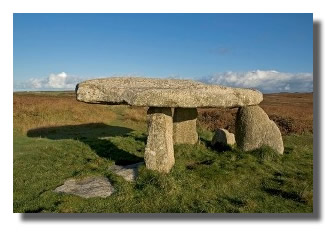
A common place for those hunting for their Celtic roots to visit is one of the most spectacular ancient monuments in the world, Stonehenge. This huge and mysterious circle of giant stones in the middle of Salisbury Plain in England was actually erected hundreds of years before the first Celts arrived in the British Isles.
Similarly, spectacular megalithic monuments also predate the Celts – such as the strange rows of stones at Carnac in Brittany or the gigantic burial chamber at Pentre Ifan in Wales – but many believe that the Celts used the monuments for their own purposes. Pentre Ifan – which features a gigantic, 40-tonne capstone balanced on three smaller stones – is said to have been a favorite place of the Druids. It’s not surprising. The magnificent views across Fishguard Bay, the sound of a skylark launching itself above the rolling fields, and the sheer enormity of the stone monument itself make for a unique place in the world. Personal Note – On the day the author of this article visited, a middle-aged couple was standing beneath the capstone, praying. It didn’t seem out of place, and when they launched into a wavering rendition of the Welsh national anthem Hen Wlad fy Nhadau (Land of my Fathers), it felt perfectly natural. And very Celtic. So I joined in!
Celtic Roots and Modern Genealogy
By way of example, we are going to now consider Irish genealogies, but the same considerations apply to all Celtic origins and lines. Key to any comprehensive genealogical research is the formulation of goals and the development of a research outline. How deep into your family tree and how wide do you wish to go? What family resources do you have at your disposal, such as old birth and marriage records and family bibles? Have others in your family undertaken such research? Very valuable information can be gleaned from documents revealing birthdates, marriages, and deaths. Social Security records, church records, deeds, and census records are all important sources for research.
Ideally, you want to determine where in Ireland your ancestors originated: the country, townland, or parish address. If you are most fortunate, you will have access to your ancestors’ immigration records and will know the port of arrival in your home country, along with any name changes, maiden names, and ages. Many immigration records contain the point of departure – invaluable for tracing back to a county of origin.
Anglo-Irish genealogical research is aided by the large number of individuals undertaking the challenge. Although many records have been lost through the centuries, the cumulative knowledge base is vast, and the Internet has assisted with pulling much of it together for both amateur and professional researchers. Disasters like the destruction of the Record Tower in Dublin Castle in the 18th century or the 1922 fire in the Ireland Public Records Office have been major setbacks, but local parish and townland records can fill many of the gaps.
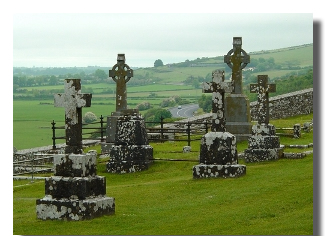
Civil records in Ireland are best traced through the General Register Office of Northern Ireland in Belfast or the General Register Office in Dublin. Research in these facilities is somewhat limited and it is often necessary to pre-book your research time in advance. Census records are spotty due to the aforementioned fire in the Public Records Office, but for many years, records are still available. Church records remain one of the best resources, and if you can determine whether your ancestors were Protestant or Catholic, it may be easier to trace the births, deaths, and marriages of ancestors using the local parish records. Each locality has its own formalities and rules about access to records, so make your inquiries and appointments for research early to avoid disappointments upon arrival.
Where to begin? With yourself, of course! Work backward as far as possible by interviewing your relatives. Try to find any old family documents, books, bibles, and photo albums, all of which might have important clues. Your family surname is a beginning, but the process of immigration often anglicized many names, obscuring their true origin. Start with a single surname and trace it out, recording your findings on a family tree or pedigree chart. Most cover a number of generations and have a space to record the birth, marriage, and death of individuals. Excellent and free, samples of charts can be found on the Internet.
Speaking of the Internet, it is one of the ultimate genealogical tools. Public records, news articles, and other people’s research worldwide can be culled for your own use. There are many, many sites devoted to genealogy, family histories, and the official records of localities. TIARA (The Irish Ancestral Research Association) www.tiara.ie is an organization that promotes the exchange of ideas among people and organizations interested in Irish genealogical and historical research and education and provides a wealth of information on Irish genealogy.
No discussion of genealogy would be complete without a mention of the Family History Library in Salt Lake City, a massive undertaking of the Church of Later Day Saints to record genealogies worldwide, containing literally millions of records from over 110 countries. Anyone is free to visit or to utilize their databases without regard for religious affiliation. There are local branch offices of the Family History Centers in over 60 countries.
There and Back Again
Once you have determined the likely point of origin of your family tree, it is time to begin considering your trip to Wales, Scotland, England, or Ireland. Ask your travel consultant about the best times to travel given your own personal preferences, schedules, and budgetary constraints. While peak season travel in the summer months typically offers the best weather conditions, off-peak spring and fall “shoulder” season discounts are hard to ignore. Your travel consultant will work with any number of reputable tour operators that can provide either individual or group packages, often at special rates. There are advantages to both independent and group tours, but your personal preferences will dictate your choice of traveling companions if any, your accommodations, itinerary, food, local transportation, and a hundred other considerations that a good tour operator will coordinate on your behalf.
It is a proud and wonderfully rich tradition from which you derive. The exploration of your family tree is as much an inward journey as an outward one. Here’s Godspeed to both.


